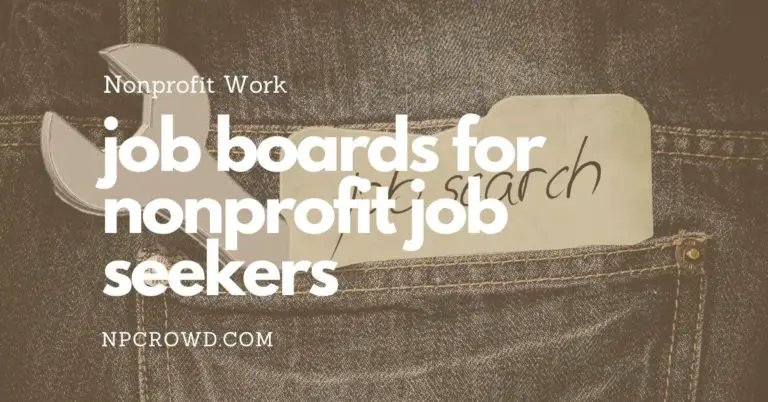Choosing the Right Employee Benefits for Small Nonprofits
Disclaimer: This post may contain affiliate links. These links, if used and purchases made, we may earn a small commission. These affiliate programs do not impact the recommendations we make or the resources we refer you to. Our focus is on providing you the best resources for your nonprofit journey.
Choosing the right employee benefits is crucial for small nonprofits to attract and retain talented employees. However, limited budgets and resources can make it challenging to offer a comprehensive benefits package. In this article, we will explore the unique challenges faced by small nonprofits, essential employee benefits to consider, additional benefits to enhance employee well-being, and budgeting strategies. Here are the key takeaways:Key Takeaways
- Understanding the different types of employee benefits is essential for designing a comprehensive benefits package.
- Identifying employee needs and preferences is the first step in designing an effective benefits package.
- Budgeting for employee benefits requires careful allocation of resources to provide valuable benefits without compromising financial stability.
- Consider additional benefits like professional development opportunities, wellness programs, employee assistance programs, and volunteer time off to enhance employee well-being.
- Regularly evaluate and adjust employee benefits based on employee feedback, cost-effectiveness, market trends, and legal requirements.
Understanding the Needs of Small Nonprofits

The Unique Challenges of Small Nonprofits
When it comes to employee benefits, small nonprofits face unique challenges. Limited budgets and resources can make it difficult to offer a comprehensive benefits package. However, it’s important for small nonprofits to prioritize the well-being and satisfaction of their employees.
One important consideration is budgeting. Small nonprofits need to carefully allocate their resources to ensure they can provide valuable benefits without compromising their financial stability.
Another consideration is employee needs. Understanding what benefits are most important to employees can help small nonprofits design a package that meets their needs and enhances their overall experience.
Finally, small nonprofits should also consider staying competitive in the market. While they may not be able to offer the same benefits as larger organizations, they can attract and retain talent by offering competitive salaries, emphasizing their mission and impact, and creating a positive work environment.
In addition, it’s crucial to listen to the needs and feedback of your employees. Conduct surveys or hold regular meetings to gather input on the benefits they value most and areas where improvements can be made.
When making adjustments, it’s essential to communicate the changes effectively to your employees. Provide clear explanations of the reasons behind the adjustments and how they will benefit the employees.
Overall, small nonprofits may face challenges in providing employee benefits, but by prioritizing employee well-being, understanding their needs, and staying competitive, they can create a benefits package that supports their mission and attracts top talent.
Identifying Employee Benefit Priorities
When it comes to choosing the right benefits, it’s important to prioritize what matters most to you. While insurance and retirement plans are typically top priorities, don’t overlook the smaller perks that employers may be willing to accommodate. Consider factors like compensatory time for exempt employees and other benefits. One approach is to identify the specific needs and preferences of your employees. By understanding what benefits are most important to them, you can prioritize those that have the greatest impact. Additionally, consider exploring cost-effective options such as partnering with professional employer organizations (PEOs) or leveraging government programs like the Qualified Small Employer Health Reimbursement Arrangement (QSEHRA). These strategies can help stretch your budget while still providing meaningful benefits.
Essential Employee Benefits for Small Nonprofits

Health Insurance Options
When it comes to providing health insurance for employees, small nonprofits have several options to consider. Group health insurance is a common choice, as it allows organizations to pool their resources and negotiate better rates. Another option is individual health insurance, where employees purchase their own plans. This can give employees more flexibility, but it may also be more expensive. Additionally, small nonprofits can explore health reimbursement arrangements (HRAs), which allow employers to reimburse employees for their health insurance premiums. HRAs can be a cost-effective solution for organizations with limited budgets.
Here are some key factors to consider when evaluating health insurance options:
- Cost: Compare the premiums, deductibles, and out-of-pocket costs of different plans to find the most affordable option.
- Coverage: Look at the network of doctors and hospitals, prescription drug coverage, and other benefits included in the plan.
- Flexibility: Consider whether the plan allows employees to choose their own doctors and specialists.
Tip: It’s important to involve employees in the decision-making process and gather their input on the types of health insurance options they prefer. This can help ensure that the chosen plan meets their needs and promotes employee satisfaction.
Retirement Plans
Retirement plans are an essential employee benefit for small nonprofits. By starting a retirement savings plan, an organization can help its employees save for the future. Not only does this benefit the employees, but it can also help attract and retain talented individuals. There are different types of retirement plans available, including traditional 401(k) plans and state-sponsored Roth individual retirement accounts (IRAs). Some states have even passed laws that require businesses to provide retirement plans, although the specific requirements vary. It’s important for small nonprofits to carefully consider the retirement plan options and choose the one that best suits their needs and the needs of their employees.
Paid Time Off
Paid Time Off (PTO) is a valuable employee benefit that allows employees to take time off from work for various reasons, such as vacation, personal appointments, or illness. It is important for small nonprofits to create a culture that encourages employees to utilize their PTO and prioritize their well-being. By promoting a healthy work-life balance, employees can recharge and come back to work with renewed energy and productivity.
One important consideration for small nonprofits is to lead by example. As a leader, make sure to use your own PTO and vacation days effectively. This not only sets a positive example for your employees but also shows that taking time away from work is essential for personal and professional growth.
Additionally, consider discussing with your employees the benefits of taking time off. Emphasize how it can improve their mental health, reduce stress, and increase overall job satisfaction. Encourage open communication about PTO and create a supportive environment where employees feel comfortable requesting time off when needed.
To further enhance the value of PTO, some nonprofits may also consider implementing a Paid Leave for All Workers Act, which allows employees to earn a certain number of days of leave each year for any reason. This can provide additional flexibility and support for employees’ personal needs.
Flexible Work Arrangements
Flexible work arrangements have become increasingly popular in recent years, and for good reason. According to Forbes, 98% of employees want to work from home at least part of the time. This desire for remote work is driven by the autonomy and flexibility it offers. As an employer, you can meet this demand by offering more work-from-home time to your employees. Consider allowing them to choose which days of the week they’d like to work from home or implementing a hybrid model where employees split their time between the office and home. This way, they can enjoy the benefits of both face-to-face collaboration and independent work time. It’s important to find the right balance that works for your organization and employees.
Additional Employee Benefits to Consider

Professional Development Opportunities
Professional development opportunities are essential for promoting employee growth and skill development. Offering these opportunities can increase employee satisfaction and help them further develop their professional skill sets. Most employees want to learn and grow at their jobs, and investing in their learning and development can contribute to their long-term commitment to the organization. According to Zippia, 49% of employees say they would stay at a company longer if it invested in their learning and development, and 68% of employees say that training and development are the most important company policy.
Here are some employee engagement ideas that will promote professional growth and skill development:
Wellness Programs
Investing in employee wellness can lead to increased productivity and job satisfaction. Whether it’s gym memberships, wellness programs, or mental health resources, creating a positive work environment is essential. Not all benefits are valued equally, and while perks like cereal bars and free parking are nice, employees also have specific demands, such as retirement help. According to a Society for Human Resource Management (SHRM) survey, employer-based retirement savings and planning rank high among the benefits employees value the most. By offering retirement benefits, small nonprofits can show their commitment to their employees’ long-term financial security.
Employee Assistance Programs
Employee Assistance Programs (EAPs) are an important benefit to consider for small nonprofits. EAPs typically provide support and resources to employees who may be dealing with personal or work-related challenges. These programs can offer confidential counseling services, referrals to mental health professionals, and assistance with issues such as stress management, substance abuse, and financial concerns.
In addition to counseling services, some EAPs also provide educational resources and workshops on topics like mental health awareness and work-life balance. This can help employees develop skills to manage their well-being and navigate challenges effectively.
Implementing an EAP can have several benefits for small nonprofits. It can improve employee morale and productivity, reduce absenteeism, and enhance overall well-being. By offering support for employees’ mental health and personal challenges, organizations can create a positive and supportive work environment.
Highlight: confidential counseling services
Volunteer Time Off
Volunteer Time Off (VTO) is a valuable employee benefit that many companies offer to promote corporate volunteerism and support charitable causes. VTO allows employees to take paid time off during the year to volunteer their time with local nonprofits. This not only benefits the employees by allowing them to give back to the community, but it also benefits the nonprofits by providing them with the skills and expertise of corporate employees. While some companies offer one day per year of paid time off for VTO, larger companies may offer even more. VTO can also be a great opportunity for team-building and getting to know coworkers better. By working together to help an organization, employees can strengthen their relationships and work as a cohesive team.
Budgeting for Employee Benefits

Determining Available Resources
When it comes to budgeting for employee benefits, it’s important to assess the available resources of your small nonprofit. Limited budgets can make it challenging to provide comprehensive benefits, but there are strategies you can employ to make the most of what you have.
One approach is to identify the specific needs and preferences of your employees. By understanding what benefits are most important to them, you can prioritize those that have the greatest impact. This ensures that you are providing benefits that truly matter to your staff.
Additionally, consider exploring cost-effective options such as partnering with professional employer organizations (PEOs) or leveraging government programs like the Qualified Small Employer Health Reimbursement Arrangement (QSEHRA). These strategies can help stretch your budget while still providing meaningful benefits to your employees.
Remember, it’s important to balance the needs of your employees with the financial constraints of your organization. By carefully assessing your available resources and exploring cost-effective options, you can choose the right employee benefits for your small nonprofit.
Cost-Effective Benefit Solutions
When it comes to providing employee benefits for small nonprofits, finding cost-effective solutions is key. One approach is to identify the specific needs and preferences of your employees. By understanding what benefits are most important to them, you can prioritize those that have the greatest impact. Additionally, consider exploring cost-effective options such as partnering with professional employer organizations (PEOs) or leveraging government programs like the Qualified Small Employer Health Reimbursement Arrangement (QSEHRA). These strategies can help stretch your budget while still providing meaningful benefits to your employees.
Frequently Asked Questions
What challenges do small nonprofits face when it comes to employee benefits?
Small nonprofits face challenges such as limited budgets and resources, which can make it difficult to offer a comprehensive benefits package.
How can small nonprofits prioritize employee well-being and satisfaction?
Small nonprofits can prioritize employee well-being and satisfaction by carefully allocating their resources to provide valuable benefits without compromising financial stability.
What should small nonprofits consider when designing employee benefits packages?
Small nonprofits should consider their budget constraints, the needs and preferences of their employees, and the competitive landscape when designing employee benefits packages.
How can small nonprofits communicate employee benefits to their employees?
Small nonprofits can communicate employee benefits to their employees through various channels such as employee handbooks, company intranet, and regular meetings.
What are some additional employee benefits that small nonprofits can consider?
Small nonprofits can consider offering additional benefits such as professional development opportunities, wellness programs, employee assistance programs, and volunteer time off.
How can small nonprofits evaluate and adjust employee benefits?
Small nonprofits can evaluate and adjust employee benefits by considering factors such as employee feedback, cost-effectiveness, market trends, and legal requirements.







